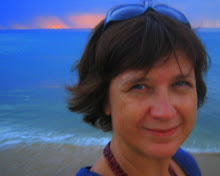 “Maputo is ‘n stad; Beira is ‘n gat” (Maputo is a city, Beira is a hole), said the khaki clad tour operator. I was on the airport bus, and had just assured my mother (in Afrikaans) that her youngest would travel safely. Language changes sensibilities; it can be barrier or bridge. This person whom I know not from Adam thought it appropriate to share such a biased opinion with me, a total stranger. I immediately felt the need to defend Beira, even though I had never been there and count Maputo as one of my favourite places. Having grown up in Durban, I have always been vaguely defensive about those ‘second’ or ‘third’ cities, the ones that do are not always in the limelight, do not have the glamour or are just not the size that justifies
“Maputo is ‘n stad; Beira is ‘n gat” (Maputo is a city, Beira is a hole), said the khaki clad tour operator. I was on the airport bus, and had just assured my mother (in Afrikaans) that her youngest would travel safely. Language changes sensibilities; it can be barrier or bridge. This person whom I know not from Adam thought it appropriate to share such a biased opinion with me, a total stranger. I immediately felt the need to defend Beira, even though I had never been there and count Maputo as one of my favourite places. Having grown up in Durban, I have always been vaguely defensive about those ‘second’ or ‘third’ cities, the ones that do are not always in the limelight, do not have the glamour or are just not the size that justifies  to be noticed. Perhaps it is just language.
to be noticed. Perhaps it is just language.Beira is situated below sea level, a city surrounded by water; swamps inland, the ocean and rivers to the east, south and north. One of our themes for the AAPS project, Climate Change and Cities has special significance here, my colleagues at Catholic University of Mozambique agreed. It would be easy to dismiss the city in a derisive comparison to other east coast centres; it is small, it lacks a core, road maintenance is lacking, waste management is limited and it appears to pay little attention to its beautiful coastline. However, in between the glossy advertisements for mobile phones (Vodacom is heading north…) and littered squares are little linear gems: tree-lined roads with faded Art Deco buildings paying allegiance to its past. A moment of colonial guilt passes as I enjoy the elegant facades and mourn the neglect and lack of maintenance of many of these structures. I then smiled when I realised I was in Eduardo Mondlane Avenue…a reminder of where I was.
How does one reconcile the architectural splendours of a colonial past with more urgent current imperatives? I pondered this as I swam laps in the 50m Municipal pool, yet another relic from the city’s past. Pausing to breathe every three strokes I noticed a number of young children warming up for their swimming lesson by jogging around the pool. My turns at the pool edge were punctuated by delightful giggles and the occasional ‘ola!’ (I was the only swimmer in the pool). Perhaps my colonial angst was unfounded; beauty in spaces and architecture is universal, much like the water that surrounds Beira and connected me experientially to those energetic little swimmers.

No comments:
Post a Comment